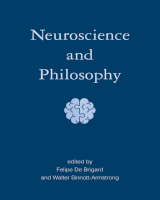Signal detection theory (SDT) illustrated for a detection task. (A) The sensory stage of SDT is a single internal response, generated on every trial (open circles on the x-axis represent four example trials). When no stimulus is presented, the internal response is drawn from a Gaussian probability distribution (stimulus-absent distribution). When the stimulus is presented, the internal response is drawn from another Gaussian distribution with a higher mean (stimulus-present distribution). When the internal responses are normalized by the standard deviation of the Gaussian, the discriminability of the two distributions (d′) is the difference in distribution means. The criterion represents the decision stage and is independent of d ′. It defines the magnitude of internal response needed to report that the stimulus was present. When the stimulus is absent, an internal response below the criterion (report absent) gives a correct rejection, and an internal response above the criterion (report present) gives a false alarm (open circles). When the stimulus is present, an internal response below the criterion gives a miss, and an internal response above gives a hit (open circles). (B) The SDT criterion computed from behavior is a relative measure: it indicates how much evidence is needed to make a decision relative to the two distributions. However, when relating behavior to neural activity, we may be interested in the absolute decision boundary—for example, the neural response magnitude required to report that the stimulus was present. This example illustrates a potential difficulty in inferring an absolute decision boundary from the SDT criterion in a detection task. The criterion estimated from behavior could change due to either a shift in the internal response distributions with no change in absolute decision boundary (left) or a shift in the absolute decision boundary with no change in internal response distributions (right). See color plate 1.


